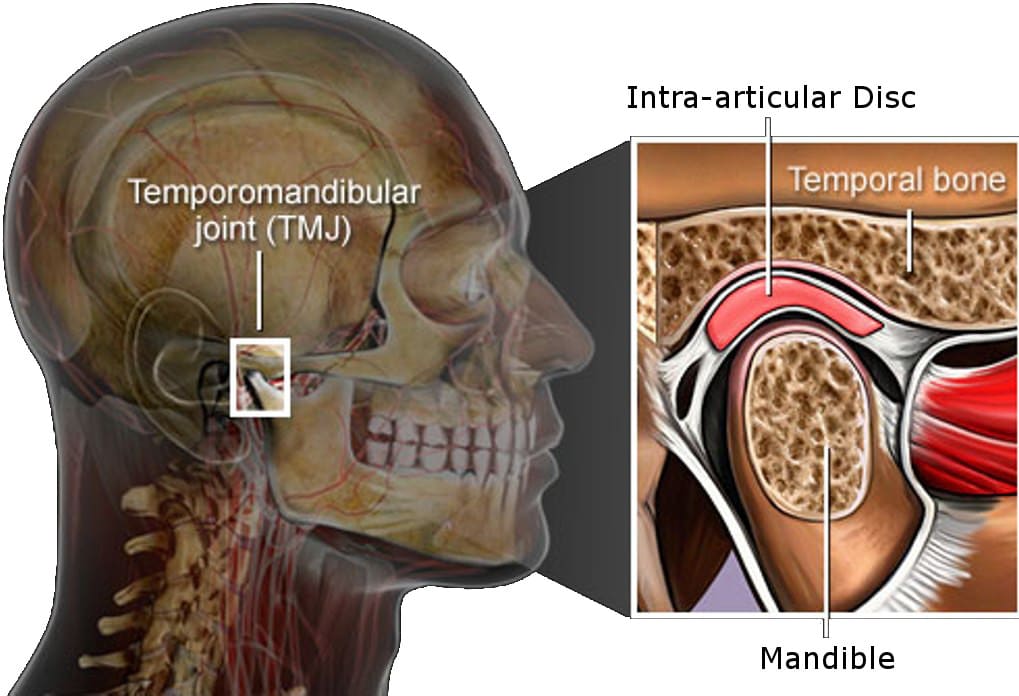What is TMJ Disorder?
TMJ stands for temporomandibular joint. It connects the temporal bone (upper jaw) with the lower jaw and is located right next to the ear on both sides. Problems in this joint are referred to as TMJ disorders or temporomandibular disorders (TMD).
TMJ disorder symptoms

- Difficulty in chewing
- Jaw makes grating or popping sounds while eating
- Jaw remain stuck in an open or closed position
- Facial pain, especially in the jaw joint area or near the ears
- Headaches
- Hearing loss
TMJ disorder causes
- Poor oral health
- Stress
- Bruxism
- Poor posture
- Tooth extraction
- Motor vehicle accident
- Tooth or jaw alignment issues
- An accidental blow to the mouth
TMJ Pain relief medication
Over-the-counter drugs like ibuprofen or aspirin can offer pain relief. Then, depending on the signs and symptoms, the dentist or physician might recommend antianxiety medicines, antidepressants, or botox/steroids injections after conducting a clinical examination.
TMJ exercises
- Goldfish exercises
- Relaxed jaw exercise
- Chin Tucks
- Forward jaw movement
- Side-to-side jaw movement
- Resisted opening and closing of the mouth



